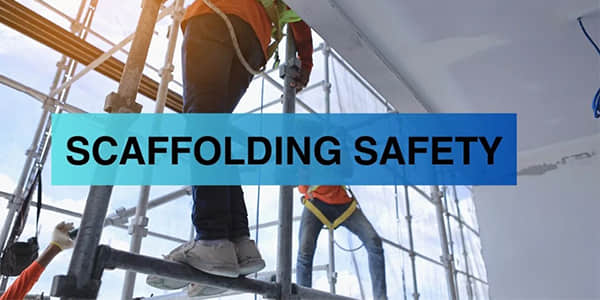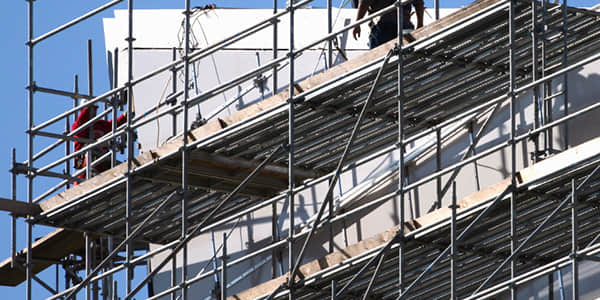Lois sur les échafaudages : sécurité des bâtiments, protection des travailleurs
Jun 14, 2025

Avec échafaudageLes travailleurs sont exposés à des risques spécifiques. Les chutes de hauteur sont l'une des principales causes de décès et de blessures permanentes dans le secteur de la construction. Outre les chutes, les personnes travaillant sur des échafaudages sont exposées à des risques supplémentaires, tels que la chute d'un objet, l'électrocution due à la proximité de lignes électriques aériennes, et les blessures graves, voire mortelles, dues à l'effondrement d'un échafaudage dû à une mauvaise installation ou à une surcharge. Les conséquences des accidents liés aux échafaudages peuvent être catastrophiques ; ils constituent une source potentielle de blessures pouvant réduire considérablement la qualité de vie d'une personne, voire, dans certains cas, la tuer. Pour une entreprise, les conséquences d'un accident grave peuvent aller de lourdes amendes et poursuites judiciaires à une atteinte à sa réputation et à des retards dans les calendriers de projet.
La législation sur les échafaudages vise à réduire ces risques en établissant des directives et des normes claires pour chaque étape de leur cycle de vie, de la conception et du montage à l'utilisation et au démontage. Ces réglementations ne constituent pas seulement des obstacles bureaucratiques, mais constituent également une garantie importante pour la protection des personnes et la création d'un environnement de travail plus sûr pour tous les acteurs de la construction.
Au niveau municipal, la plupart des lois sur les échafaudages partagent des principes fondamentaux communs. Ceux-ci couvrent généralement :

Une planification adéquate avant l'érection d'un tube simple est essentielle. La plupart des réglementations relatives aux échafaudages exigent que ceux-ci soient conçus par un ingénieur qualifié, ou une autre personne compétente, lorsque l'échafaudage est complexe ou à haut risque. Dans tous les cas, la conception doit tenir compte de l'usage prévu de l'échafaudage, notamment : - la capacité de charge maximale ; - les conditions environnementales (charges de vent, etc.) ; - le sous-sol. Des fondations et un ancrage adéquats sont également essentiels à la stabilité.
L'installation et la désinstallation d'un échafaudage comportent des risques. La législation exige généralement que ces activités soient effectuées par des travailleurs formés et compétents, sous la supervision d'une personne qualifiée. Des procédures spécifiques garantissent la stabilité de chaque phase. Ces exigences peuvent inclure :
Une fois installé, un échafaudage doit être utilisé et entretenu de manière responsable. La législation relative aux échafaudages aborde généralement les points suivants :
Un aspect essentiel de la sécurité des échafaudages est la compétence du personnel. La législation relative aux échafaudages s'applique généralement à tous les travailleurs impliqués dans des travaux liés aux échafaudages, notamment :
La formation est importante pour garantir que tous les travailleurs peuvent comprendre les dangers, comment utiliser l’équipement en toute sécurité et comment ils peuvent identifier et signaler les conditions dangereuses.
La plupart des lois sur les échafaudages exigent la tenue d'une documentation et d'enregistrements précis. Cette documentation rend compte :
Cette documentation est utile pour prouver la conformité, repérer les tendances et faciliter les enquêtes en cas d’incident.
Qui applique la législation relative aux échafaudages ? Les autorités de réglementation, comme l'OSHA (États-Unis) et le HSE (Royaume-Uni), veillent à l'application de la législation relative aux échafaudages. Elles inspectent les échafaudages, enquêtent sur les accidents, émettent des contraventions et des amendes, et/ou engagent des poursuites judiciaires en cas de non-conformité.
Les chefs d'entreprise cherchent à se conformer à la législation sur les échafaudages pour plusieurs raisons, au-delà du simple souci d'éviter des amendes ou des pénalités : instaurer une culture de sécurité au travail, protéger leurs employés, leur atout le plus précieux, et assurer le bon déroulement de leurs projets. Le non-respect de la législation sur les échafaudages peut avoir de graves conséquences, notamment :
À mesure que les pratiques de construction évoluent, la législation relative aux échafaudages évolue également. Les avancées technologiques, telles que les inspections par drones, les systèmes de surveillance en temps réel et l'amélioration des matériaux, influenceront probablement les futures réglementations. On accorde également une importance croissante aux systèmes de gestion de la sécurité holistique, qui intègrent la sécurité des échafaudages dans des plans de sécurité plus vastes sur les chantiers.
La législation sur les échafaudages est bien plus qu'un simple ensemble de règles ; elle constitue un engagement en faveur de la sécurité, le reflet de la compréhension du secteur des dangers inhérents au travail en hauteur et une mesure proactive pour protéger les vies. En adhérant à ces réglementations, les concepteurs, les entrepreneurs et les travailleurs contribuent collectivement à la construction d'un environnement de travail plus sûr, un échafaudage à la fois. Prioriser la conformité n'est pas seulement une obligation légale ; c'est un impératif éthique qui protège les vies et assure la croissance et la réussite continues du secteur de la construction.
Quels sont les principaux types d’échafaudages couverts par ces lois ?
Puis-je apporter moi-même des modifications à un échafaudage érigé ?
Comment assembler un échafaudage —— YouTube
Règles relatives aux échafaudages —— GOUVERNEMENT